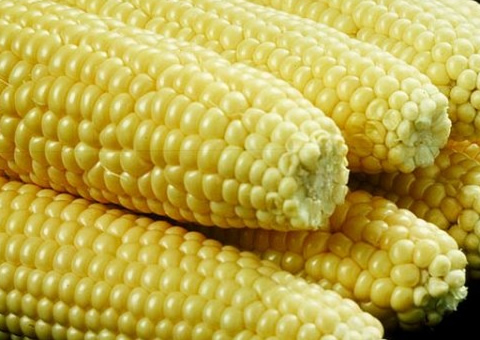
In the heart of Ghana’s traditional culinary practices lies a little-known but nutritionally potent delicacy – Akokono, the larvae of the African palm weevil (Rhynchophorus phoenicis). While it has long featured in the diets of rural communities and certain ethnic groups, its wider acceptance has been limited due to stigmas associated with insect consumption. Yet, with modern science confirming the immense health benefits of this indigenous food, the time has come to re-evaluate Akokono’s role in Ghana’s nutrition and health policy.
Rediscovering
Indigenous Nutrition
Ghana is currently grappling with dual nutritional challenges: undernutrition and micronutrient deficiencies on one hand, and rising lifestyle-related illnesses such as obesity and diabetes on the other. In this context, rediscovering nutrient-rich indigenous foods like Akokono is both timely and essential.
Akokono is not merely a traditional snack. It is a high-protein, mineral-rich, and environmentally sustainable food source. Recent studies conducted by researchers from the Kwame Nkrumah University of Science and Technology (KNUST), McGill University (Canada), and the International Centre of Insect Physiology and Ecology (ICIPE) have all highlighted Akokono as a superfood with the capacity to significantly improve public health outcomes if integrated into mainstream diets.
Nutritional profile: What
makes akokono a
superfood?
One of the most remarkable attributes of Akokono is its dense nutritional content. It contains all the essential amino acids required by the human body. This means that it offers a complete protein source comparable to that found in meat, poultry, and fish. For communities with limited access to animal protein, Akokono presents an affordable and accessible alternative.
In addition to protein, Akokono is high in healthy fats, particularly mono- and polyunsaturated fatty acids, which are beneficial for cardiovascular health. It is also a good source of:
• Iron: Crucial for the prevention of anemia, especially among women of reproductive age and children.
• Zinc: Important for immune function and cellular repair.
• Magnesium and Copper: Essential for enzymatic reactions and energy metabolism.
• Vitamin B12, Riboflavin, Niacin, and Folate: Vital for red blood cell production, nervous system function, and DNA synthesis.
A 2020 study published in BMC Nutrition by Parker et al evaluated the incorporation of Akokono into groundnut paste for children and found significant improvement in the protein and micronutrient profile of the food. Children who consumed this fortified paste showed better growth markers and nutritional status compared to those who did not.
Akokono and the fight
against anemia
Anemia remains a public health crisis in Ghana. According to the Ghana Demographic and Health Survey (2019), over 66 per cent of children under five and 42 per cent of women of reproductive age are anemic. Iron supplementation programmes have had mixed results due to compliance issues and poor dietary habits.
Here, Akokono offers a culturally acceptable and highly bioavailable source of dietary iron. Unlike iron tablets, which can cause gastrointestinal side effects, iron obtained from natural food sources like Akokono is easier on the body and often more readily absorbed. Promoting Akokono-based foods as part of antenatal and child nutrition programmes could be a game-changer in reducing anemia-related complications such as maternal mortality, low birth weight, and stunted growth.
A sustainable solution to
protein deficiency
Apart from health benefits, Akokono holds significant environmental advantages. The larvae can be farmed using agricultural by-products like palm fronds and peels, making them ideal for circular economy models. They require less water and feed compared to livestock, emit fewer greenhouse gases, and mature quickly. This makes Akokono farming highly sustainable and scalable.
In a time when climate change threatens traditional agriculture, insect farming is being touted globally as the future of sustainable food systems. The United Nations Food and Agriculture Organisation (FAO) has endorsed edible insects as a viable solution to global food insecurity. Ghana, with its rich tradition of entomophagy, has a golden opportunity to lead Africa in this domain.
From farm to table:
Culinary versatility of Akokono
Culinary innovation has shown that Akokono can go beyond roasted snacks or street-side delicacies. In recent years, Ghanaian chefs, nutritionists, and food entrepreneurs have developed several value-added products using Akokono, including:
• Akokono-fortified biscuits and cereals for school feeding programs.
• Protein-rich pastes mixed with groundnut or shea butter.
• Powdered Akokono flour, used in porridges or weaning foods.
• Gourmet dishes including stews, kebabs, and rice meals.
This versatility increases its appeal and ease of integration into regular diets. With proper processing and packaging, Akokono-based products could also be exported as part of Ghana’s agri-food economy.
Overcoming barriers to
acceptance
Despite its benefits, urban populations and the elite often view Akokono consumption as primitive or unclean. This stigma is rooted in colonial-era dietary shifts and modern misperceptions. Breaking this barrier requires targeted health education campaigns, culinary demonstrations, and endorsements by health professionals and influencers.
Schools, churches, health facilities, and media platforms should be used to normalize insect-based foods. Additionally, the Ministry of Food and Agriculture (MOFA), Ministry of Health, and Ghana Health Service must incorporate Akokono into nutrition policy frameworks and school feeding initiatives.
Incorporating food science research into traditional knowledge can further standardize safety, hygiene, and preservation methods to increase confidence in its consumption.
Policy recommendations
To fully harness the potential of Akokono, I recommend the following:
1. Inclusion in National Nutrition Strategies – The Ghana School Feeding Programme and maternal nutrition policies should consider Akokono products.
2. Support for Akokono Farming – Provide training, starter kits, and subsidies to young farmers and women’s groups.
3. Research and Development – More academic research into the health effects of Akokono can support clinical nutrition and public health interventions.
4. Standardization and Certification – Develop safety standards through the Food and Drugs Authority (FDA) for Akokono-based food products.
5. Export Potential – Position Akokono as part of Ghana’s green economy and explore international markets where edible insects are gaining popularity.
Conclusion
In a country blessed with diverse food traditions, Akokono stands out as both a heritage food and a modern health solution. It combines nutrition, sustainability, and economic potential in one small package. Ghana must seize this opportunity to reframe Akokono not as “food for the poor,” but as “food for the future.”
It is time to put Akokono on the national plate—not as a relic of the past, but as a superfood for the present and future health of our nation.
About the Author:
Prof. Raphael Nyarkotey Obu is a Professor of Naturopathic Healthcare, Lawyer(Gambia Bar), and a Chartered Health Economist
BY: PROF. RAPHAEL NYARKOTEY OBU
The post Akokono: Ghana’s forgotten superfood to combat malnutrition, anemia, and food insecurity appeared first on Ghanaian Times.
Read Full Story

















Facebook
Twitter
Pinterest
Instagram
Google+
YouTube
LinkedIn
RSS